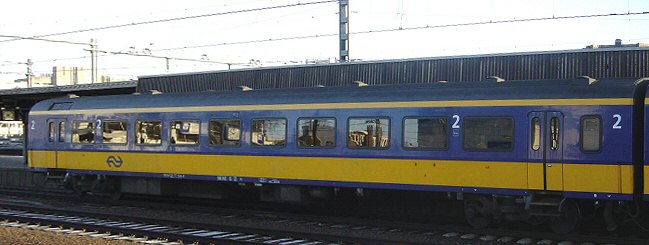The real WTF: transportation in Seattle
-
Double-decker trains also requires more time at the station. Ass-pulling numbers, but in .nl a double decker train will have 100 seats to 2 sets of doors, while a single-decker train will have 3 sets of doors to ~40 seats and more standing room.
Some older trains still use separate locomotives, but all the newer stuff (including double-deckers) is self-driven.
-
WHO IS "WE!"?
Well, my profile does say that I'm based in the UK so that might do as an initial hypothesis, and it's not a secret that I work in Manchester; I've stated that quite a few times in various threads.<But I prefer to not say where I live exactly. Some stuff I regard as private.>
-
Ass-pulling numbers, but in .nl a double decker train will have 100 seats to 2 sets of doors, while a single-decker train will have 3 sets of doors to ~40 seats and more standing room.
Double-decker carriages have two doors on each side and seat up to about 100 people per carriage (on average) in the [url=https://nl.wikipedia.org/wiki/Dubbeldeksinterregiomaterieel]regional types[/url], and up to 172 in the [url=https://nl.wikipedia.org/wiki/Dubbeldeksmaterieel]commuter types[/url].The relatively rare [url=https://nl.wikipedia.org/wiki/Intercityrijtuig]single-deckers, seating between 69 and 90[/url], have just two sets of doors too:
There’s also the [url=https://nl.wikipedia.org/wiki/Sprinter_Lighttrain]Sprinter Lightrail[/url] that has six or ten sets of doors per side per train (the interior being largely continuous), and seats 222 or 332, respectively.
-
In Poland
that'sthe right thing to do is not to take a fucking bike on a fucking bus.Especially since, at least where I live, only the city buses are the models you can put a bike on, and those generally aren't going on routes longer than 10 or so miles. The intercity buses (or PKS, as we call them) are generally coaches where a bike just won't fit (and no, don't try).
Could you people STOP SAYING "WE" WITHOUT DEFINING WHO THE FUCK "WE" IS?
When in doubt, it's a royal "we". As in, @dkf personally doesn't have double decker trains and has to compensate (heh, heh) with longer trains.
-
That's all well and good until you discover that some stations literally are only long enough (
 ) for a single carriage.
) for a single carriage.It's really weird getting on a 2-carriage train to be told that if you want to get off (
 ) at a certain station, you have to use the front carriage only.
) at a certain station, you have to use the front carriage only.
-
@dkf personally doesn't have double decker trains
That's correct, unless I make them out of Lego or something.
-
Well, you could as well have said that the right way is to not ride a bike in a city at all. There are very few bike lanes, you are mostly either illegally and dickishly inconveniencing pedestrians, or obediently trying not to get hit by cars going up to 80 Kmph.
So, good fucking luck.
I really do envy the Dutch. Oh, how much do I envy them!
-
These things are self-amplifying. Bike paths are built because a lot of people use bikes, and people use bikes because there are a lot of bike paths.
Additionally .nl is particularly small and flat (as in google maps won't even produce a height profile for your trip), which also boosts bike usage.
-
Yeah, I get it. I also know, that you have a long tradition of bike riding, I'm sure I've read in Karel Čapek's travel notes, that he's been admiring it in 1920s or 1930s already. I also know that it's hard to convert modern cities with architecture pre-20th-century and often even going as far back as 1500-1600, like Kraków I live in.
Despite all those reasons, it's awesome and impressive.
-
Yeah, once you've got a status quo it's hard to break. The pre-20th-century thing is bogus though. There are some recently-built cities in The Netherlands, like Rotterdam whose city centre had to be rebuilt after WW2, or Almere and Lelystad which were built on land that was drained in the 60s and 70s. But most cities are older just like Polish ones and still manage to have good bike infrastructure.
-
I'm not saying it's impossible, I'm saying it's hard, especially when cars take preference before bikes, due to the culture thing.
It's still certainly possible. I really wish it'd be being done, especially in Kraków, third most polluted in EU.
